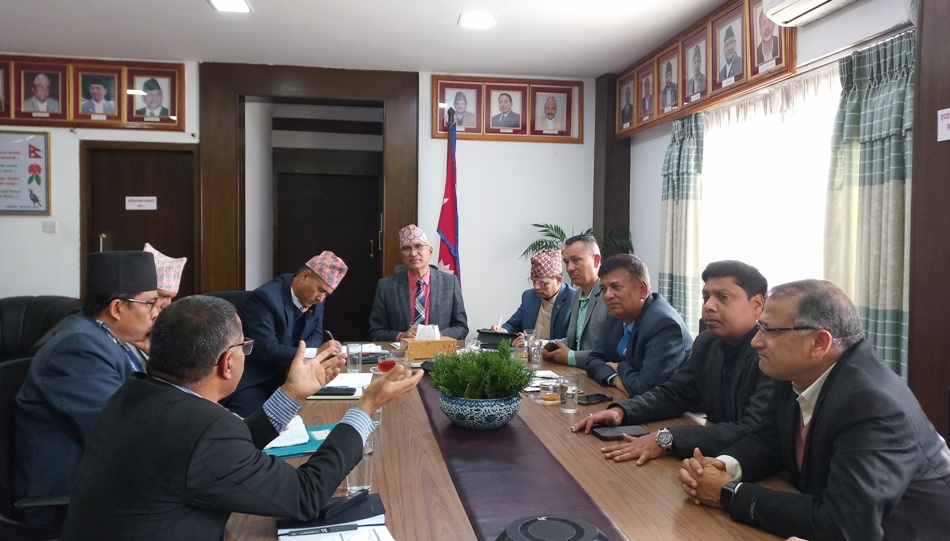KATHMANDU: A government-appointed taskforce has recommended that microfinance institutions (MFIs) ensure that the projects they fund are insured as a condition for receiving loans. This new provision is aimed at reducing the financial burden on borrowers if their ventures fail, safeguarding them from prolonged indebtedness.
The seven-member taskforce was formed five months ago by the Ministry of Finance (MoF) to address growing concerns in the microfinance sector. Led by Neelam Dhungana Timsina, Deputy Governor of Nepal Rastra Bank (NRB), the taskforce also includes senior officials from the MoF and representatives of the Microfinance Victims Struggle Committee.
In the report submitted to the MoF, the taskforce emphasized the necessity of mandatory project insurance for loans issued by MFIs. The report states, “In the absence of insurance, borrowers are unable to repay their loans, which often leads to longer-term debt if the projects fail or go bankrupt.”
Currently, when receiving loans from MFIs, individual borrowers or their spouses are required to purchase an insurance policy, but this does not provide sufficient protection for loan repayment. The proposed insurance provision would ensure a backup system for settling loans, thereby alleviating the financial stress on borrowers.
Addressing the Root Issues in the Microfinance Sector
Microfinance institutions in Nepal were initially promoted by the NRB with the objective of creating self-employment and income-generating opportunities for the poor. However, the sector has come under fire for imposing high interest rates on borrowers, which has often led to a cycle of perpetual debt for many.
Until last year, when the NRB capped MFI lending rates at 16.5 percent, interest rates from these institutions often exceeded 30 percent, leaving many borrowers unable to keep up with repayments. Many MFIs have also struggled with loan recovery, adding further strain to the sector.
The taskforce report has made several key recommendations to address these challenges, including a mandatory waiting period of at least one month between loan clearances and new loan applications from the same MFI. The report also suggests that MFIs separate borrowers based on their capacity to repay loans, ensuring a more structured and risk-averse lending process.
Policy Reforms and Operational Improvements
The taskforce has outlined several reforms to improve the internal operations of MFIs. Key recommendations include:
Loan Restructuring for COVID-19 Victims: Providing an opportunity for genuine victims of the pandemic to restructure their loans and extend repayment deadlines.
Branch Expansion: Encouraging MFIs to open more branches in rural areas, where access to financial services is limited, rather than in urban centers.
Targeted Lending to Deprived Sectors: The taskforce has called for mandatory provisions requiring MFIs to issue at least 5 percent of their loans to the deprived sector, ensuring that the poorest communities benefit from microfinance services.
Internal Control Reforms: Improving internal control systems within MFIs to ensure more transparency and accountability in their operations.
The report also highlights the need for addressing the shortcomings in MFI operations, particularly in terms of transparency, fair lending practices, and interest rate regulation.
High-Interest Rates and Anomalies in Microfinance
Despite the good intentions behind the establishment of MFIs, the sector has been plagued by high-interest rates, often crossing the 30 percent mark before the NRB imposed the 16.5 percent cap. This excessive cost of borrowing has placed many of Nepal’s poor in a cycle of debt, with limited opportunities to repay their loans or improve their financial situation.
According to the Ministry of Finance, the taskforce’s recommendations aim to rectify these issues and create a more sustainable and fair system. The proposed reforms are expected to ease the financial burden on borrowers, while also improving the operational efficiency of microfinance institutions.
With the implementation of these measures, the government hopes to address both the needs of borrowers and the financial sustainability of the MFIs, ultimately strengthening Nepal’s microfinance sector and making it more accessible and equitable for all.

